All you need to know about vehicle active sound design
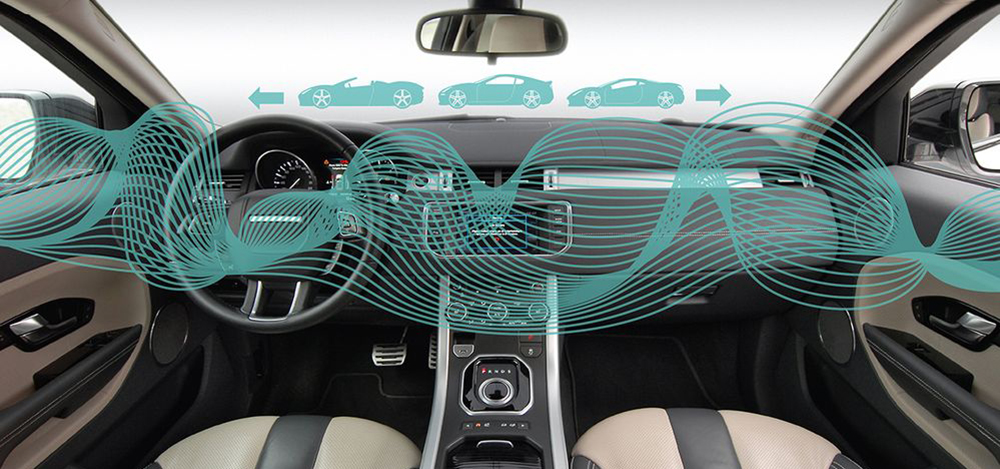
The growing electrification trend in the automotive industry is noticeably reshaping vehicle development. This new power train concept has a direct impact on other vehicle performance aspects and introduces new challenges. One of the main concerns that is even changing the legal framework on the international level is the acoustic characteristics of these vehicles.
This is the moment when the rising technology called ”active sound design” comes into play. This technology is based on generating artificial sound that is played back through the audio system to improve interior noise. In other words, next to the functional sounds in the car, sound design generates meaningful sounds serving several purposes. On one hand it masks the unpleasant sounds, and on the other hand it creates acoustic feedback by adding the missing engine orders. On top of that, active sound design generates exterior sound to also serve the original equipment manufacturers’ (OEMs) legal requirement to develop acoustic vehicle alerting systems (AVAS).
Replacing the traditional internal combustion engine (ICE) obviously brings some disadvantages. But interestingly, these can be easily turned into brand advantages when using new acoustic tools. The fact the electrified powertrain has unpleasant high tonal noises, there is no acoustic feedback and noises that were previously masked by the loud combustion engine are now obvious, compel development teams to seek new tools to ensure appealing sound quality.
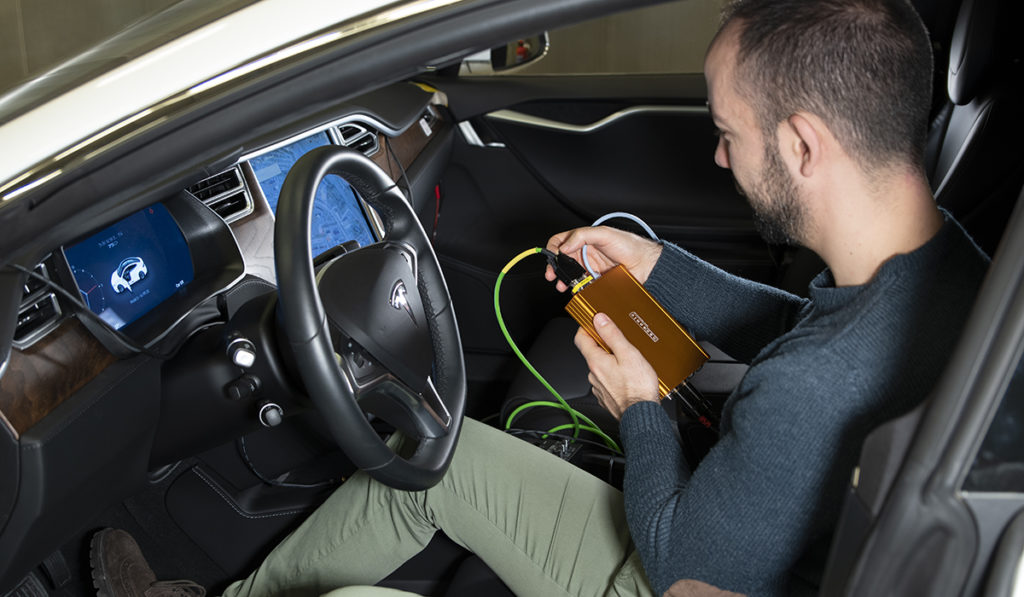
What is active sound design about?
Although some people may think this technology resulted from the development of the electric vehicle (EV), the opposite is true. It was available earlier for developing appealing ICE cars.
However, active sound design had already been around for several years. This technology was originally developed for ICE vehicles. When the combustion engine underwent a major transformation caused by cylinder deactivation and OEMs started to build one engine for different product lines (for example, sporty and luxury models), active sound design helped to ensure attractive sound signatures that matched customer expectations. This active sound design is still extensively used in this market segment.
The electrification of the powertrain brings active sound design to the next level. Although artificial sound served mainly the sound quality and emotional considerations in ICE vehicles, sound design becomes functional and an integral aspect of the driving experience in the electrified vehicles. In hybrid vehicles, this technology can acoustically resolve the inconsistent interior scenarios (for example, the moment between the engine switches). For electrical vehicles this solution offers options to create consistent acoustic feedback for the driver, reflecting the engine orders and driving conditions (acceleration, braking, etc.), which is per default absent in electrified engines.
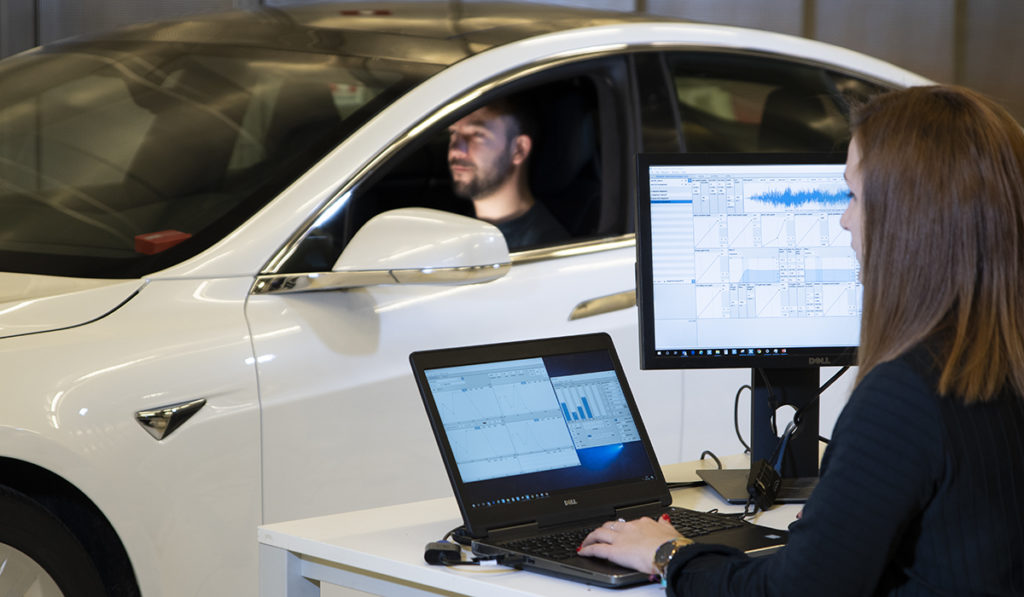
Claim your brand sound signature with active sound design
And what should this sound like? This is the question the acoustic development teams are striving to answer. Adding artificial sound to a vehicle unveils a great branding opportunity, especially for the electrified powertrains, where most engines sound similar and miss the brand identity. Active sound design empowers the OEMs to compose a new sound signature reflecting the company’s legacy. On the one hand, active sound design can be adapted according the driving mode – eco, sport, comfort – on the other hand, this system masks unwanted sounds and increases the cabin sound quality.
This technology has several advantages. Firstly, to ensure appealing sound quality, acting on the acoustic level OEMs can steer away from the strategy of adding damping material or changing the design of systems or components. Both strategies are usually associated with higher cost and, moreover, the result can deteriorate the vehicle economy performance, unlike adding artificial sound that requires only integration of new electronics. Secondly, active sound design can be added later in the development cycle. This allows the development teams to first gain an understanding of how the car behaves and only then do they design the sound accordingly. Sound development is independent of the mechanical development and the sound can be changed with the software adaptation later without any physical vehicle changes.
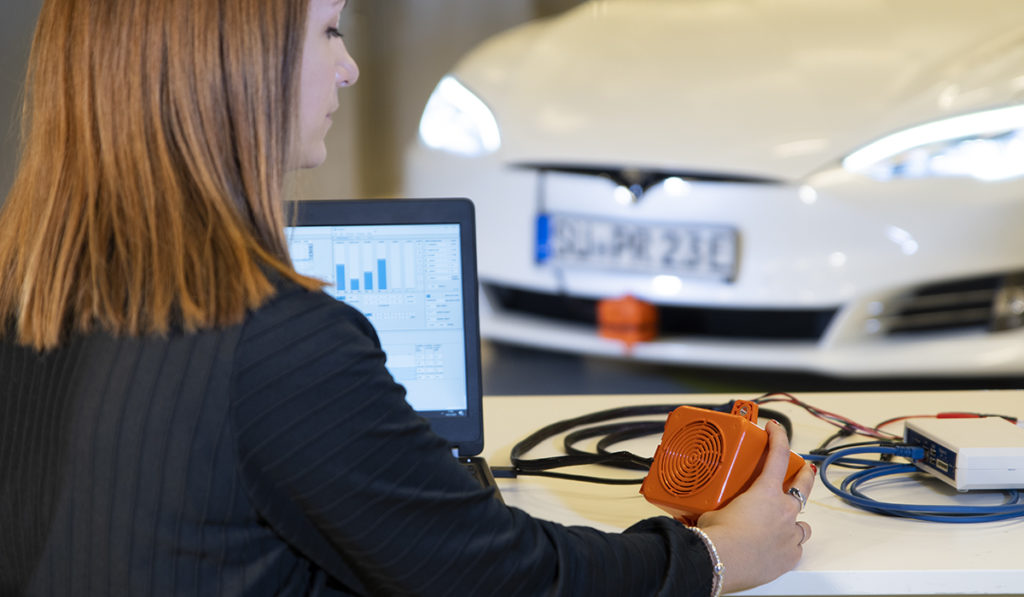
New tools for new challenges
The expectations for new vehicle sound, either technical or emotional, carry new challenges for the acoustic development teams. Designing new vehicle sound doesn’t only require good technical knowledge, but it also entails expertise from the music world and composition skills. Siemens Digital Industries Software has recently extended the Simcenter™ software portfolio with active sound design solutions engaging music with technical expertise. This correspondent tool chain integrated in a new Simcenter Testlab™ software module has been developed for acoustic engineers that need to translate driveline condition into artificial sound. The artificial sound can be either order or non-order based. The system has a direct link to the vehicle dynamics as it reads the information from the CAN bus, and by applying complex algorithms sound is generated based on wave tables, frequency modulation, granular synthesis, etc.
This off-the-shelf solution by Siemens Digital Industries Software provides great development flexibility. The acoustic teams need only to create a connection to the CAN bus and vehicle and connect it with dedicated hardware and software. This setup can be used in various environments – in a laboratory, on a simulator or directly in the vehicle. More interestingly, working with this system enables the acoustic engineers to change any parameters in real time with immediate reaction.
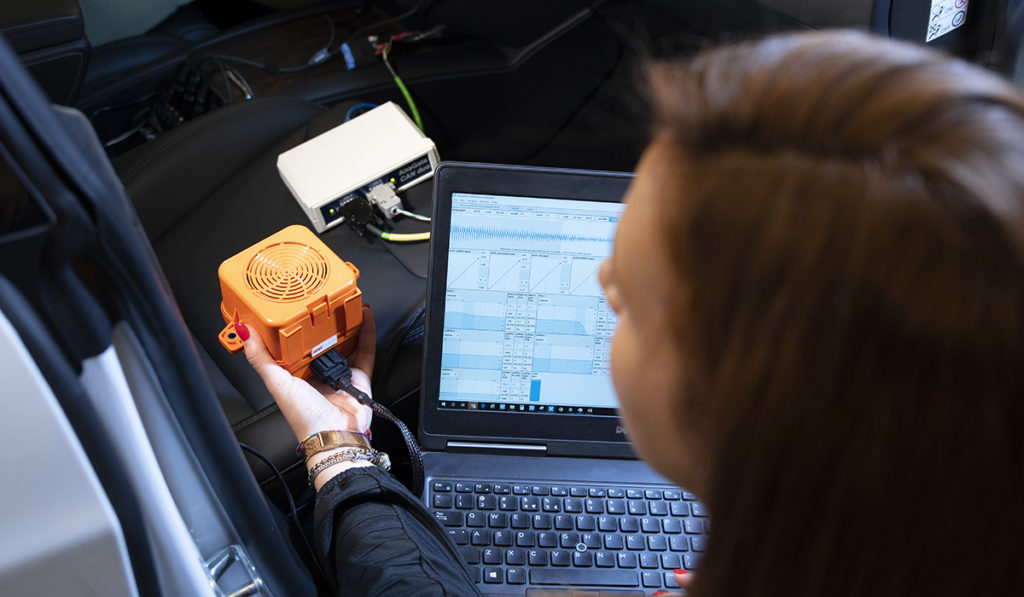
And finally, being part of the industry-leading noise, vibration and harshness (NVH) platform, such as Simcenter™ Testlab, this solution accommodates direct access to sound quality engineering and an AVAS minimum noise certification framework.
Today, OEMs producing electric cars stand at a crossroads. Will they design completely new, futuristic-sounding acoustic signatures or will they keep the ICE-ish sound? Most likely, we will hear the answer soon. But it is obvious that Simcenter solutions for active sound design offer a comprehensive and flexible toolbox to achieve a chart-topping outcome.
 English (UK)
English (UK)  Deutsch (Deutschland)
Deutsch (Deutschland) 

